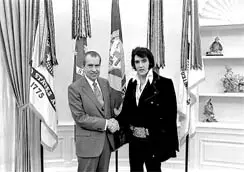Public domain photos
Learn how to identify public domain photos.
Public domain photos? Those are any photos posted on the Web, right? Wrong.
The mere fact that a photograph is posted on the web does not mean it’s in the public domain. So don’t help yourself to others’ photos unless you have permission or you know the photo is free to use — and free to use the way you intend. Photographs are protected by copyright and unauthorized copying is infringement. But listen ... you won’t risk infringing anyone’s copyright if you know how to find public domain photos.
Learn where you can find public domain photographs »
A hypothetical ...

Sandro Botticelli, The Birth of Venus (c. 1482-83). Florence: Uffizi.
Imagine that you want to use a photo of Botticelli’s Birth of Venus on your web site. You check out some stock photography sites and find just what you’re looking for. Great! Not so fast — the photo you found is “rights managed.” That means your use of the image will be limited and you will have to pay an ongoing fee.
The fee you’ll have to pay will depend on how and where you want to use the image, and for how long. And believe me, depending on where you get the photo, it’s not cheap. Turns out that the use you’re contemplating (on your web site) costs USD 210.00 for a duration of “up to 1 month.” Wow. So you search further. What you’d really like is a public domain photo. But ...
How do you know if a photo is in the public domain?
How to determine a photograph is in the public domain
Copyright notices are no longer required in the US, so you should never assume that lack of a notice means a photo isn’t protected by copyright.
Note: In contrast, copyright notices are misused all the time — like when publishers put copyright notices on accurate photographic copies of 15th century paintings, or the US Constitution — so don’t assume the presence of a copyright notice means a work is actually protected, either.
So how can you tell? Well, you have to be a little bit of a sleuth. If you evaluate the photo with the following points in mind, you can figure it out.
A photograph could be in the public domain in the US for any of the following reasons:
- The photo was created by the U.S. government.
In the United States, a good source of public domain photos is the federal government. There are many federal agencies creating photos all the time — and any works that US government employees create (as part of their jobs) are not protected by copyright.
- The photo lacks a copyright notice.
Although copyright notices are no longer required in the United States (as I mentioned above), they used to be. If the photograph was published before 1989, it needed a copyright notice. If it was published without one, it went into the public domain unless the copyright owner fixed the problem within a certain time.
(In brief, publication means that the work has been made available to the general public without restrictions. For more about publication, see this page).
- The photo’s copyright has expired.
Copyright doesn’t last forever (even though Sonny Bono wished it would). Once a work’s copyright has expired the work enters the public domain, where everyone can use it freely. To know when a work’s copyright expires, you must know when it was published ... so you know which copyright term applies. For more information, see the copyright expiration page of the tutorial.
- The photo is not eligible for copyright protection.
There’s a originality requirement for copyright protection in the US, and most photos satisfy it. (Think of lighting, camera angle, composition or arrangement of the subject, etc.) But what about a photograph that’s an exact copy of a preexisting photograph? Or a photo that’s an exact copy of a page of text, or of a drawing or painting? This is where it gets murky.
A US district court has decided that exact (the court called them “slavish”) photographic copies of public domain paintings are not eligible for copyright. But be aware that other courts might disagree, should you end up getting sued. And Corbis has more money than you do, probably.
- The photo has been dedicated to the public domain.
Because not everyone is all about “all rights reserved,” there are some wonderful contemporary public domain photos out there. They’re yours to use and enjoy. You just have to be sure that the work’s creator clearly intended that the work become part of the public domain. Look for a written statement dedicating the work to the public domain.
To learn more about how to tell if a work is in the public domain for one of these reasons, and more, browse through the copyright and public domain tutorial.
Caveat! Underlying legal rights can trip you up ...

Nixon and Elvis, 1970. (National Archives and Records Administration)
Okay ... so if a photograph is in the public domain, you don’t need to ask permission or pay fees (except maybe a one-time fee for an actual physical or digital copy). You’re free to do whatever you want with the copy, generally. Why generally? Because there are some exceptions to what you can do, even then.
If the photograph you want to use includes an identifiable person and you want to use the photo commercially (in an advertisement, say), you’ll need to get permission. If you don’t, you could violate his or her publicity or privacy rights. And no, it doesn’t matter if the person is dead (well, maybe Elvis isn’t ... ;-).
